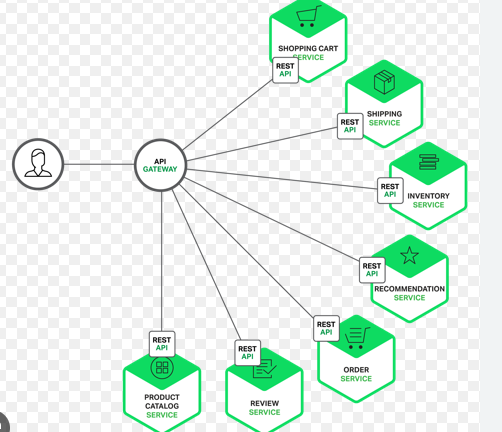Kubernetes Connection Pooling Works
- RNREDDY

- Sep 9
- 4 min read

How Kubernetes Connection Pooling Works
Database connection pooling is a method used to keep database connections open so they can be reused. And that reuse matters more than people assume.
Opening a fresh database connection is expensive. It’s not just TCP overhead. It includes authentication, authorization, SSL handshakes, and network latency, especially if the database is running outside the cluster. That’s why applications rely on connection pooling. Instead of opening a new connection for every request, they reuse existing ones.
Sounds simple.

The client makes an API call. That call checks if a valid connection already exists in the pool. If yes, it uses that connection. If not, a new one is created and added to the pool.
Once done, the connection is returned to the pool for future reuse. Connections that stay idle for too long may be closed to free up resources.
In many setups, teams run a connection pooler inside each application pod and move on. It works fine in local or single-node environments. But inside a Kubernetes cluster, things change. Each pod runs its own isolated pool. You are no longer managing one shared pool but many small, separate ones.
This creates real problems. Idle pods can hold open connections. Active pods may wait even when connections are free elsewhere. Databases hit connection limits without real usage spikes.
Here are four patterns you’ll often see in production:
Partial Pool Utilization
Full Pool Utilization
Connection Contention
All Pods Disconnected

Let’s say you run 5 pods of your application in Kubernetes. Each pod includes its own internal connection pool to the database.
At any given moment, only 2 of those pods are actively handling requests. This could happen due to uneven traffic, DNS caching, or sticky sessions.
Only those 2 active pods start using their pools and opening database connections. The remaining 3 pods are idle, so their pools stay unused and no connections are opened from them.
Let’s say each active pod opens 10 connections. So your database sees only 20 active connections, even though 5 pods are running.
Now traffic increases or evens out. All 5 pods begin handling requests. Each pod spins up its connection pool and opens 10 new connections. Your database connection count jumps from 20 to 50 in a short span.
If your database is configured to allow only 40 connections, the last few pods won’t be able to connect. They fail, even though overall traffic doesn’t look high.
Why this matters:
Partial utilization hides the real impact of per-pod connection pools.
At low traffic, everything seems fine. But as more pods become active, they each bring their own pool and open new connections, spiking usage suddenly.
What to watch for:
Don’t assume connection count equals traffic volume
Monitor total active DB connections, not just per pod
Consider sidecar or shared poolers to avoid per-pod spikes
Set realistic limits on pool sizes per pod

This happens when all pods are active and every connection pool is fully in use. Each pod is holding the maximum number of database connections it is allowed to open.
The database is under constant load from all these connections. There is no room left for new pods, retries, or sudden traffic spikes. Even a routine pod restart can lead to connection failures.
The core issue is that each pod manages its pool independently. None of them know how many total connections are being used across the cluster. So the database ends up carrying more than it should.
What to watch for:
Database errors during deployments or scaling
Latency without a traffic increase
No room to recover from small failures
Full pool utilization is a warning sign. It means the system is tightly packed, and any shift can cause breakage.

You see errors. But only from some pods. Others are working just fine.
You check the database. It’s not maxed out. Connections are available.
So what’s going on?
Each pod has its own connection pool. That’s the catch.
When one pod hits its pool limit, it waits. Meanwhile, another pod might be idle, holding unused connections. The pools don’t talk to each other. They don’t share.
It’s not a real database bottleneck. It’s fragmentation.
The noisy pods suffer. The quiet ones waste resources. From the outside, everything looks healthy. Inside, the traffic is stuck behind invisible walls.
What to watch for:
Errors from random pods while others stay silent
DB showing unused connections but app reports timeouts
Inconsistent latencies across replicas
To fix this, consider using a centralized connection pooler or redesign the pool to allow coordination across pods.

I once worked on a setup where everything looked stable. No errors. No active traffic. Just a quiet cluster.
But the database kept rejecting new connections. We checked usage. Nothing was running heavy.
And we discovered,
Every pod had its own connection pool. Even though the apps weren’t doing anything, those pools never released their connections. The database thought all of them were still in use.
New pods came up during a deploy and tried to connect. They were blocked. Not because of real load, but because old pods were holding on to idle connections.
This issue doesn't show up under pressure. It shows up during quiet hours, restarts, or when scaling down.
What to watch for:
High DB connection count during low traffic
New pods failing on startup
Idle pods holding on to unused connections
Configure maxLifetime, idleTimeout, and maxIdleConns to auto-clean stale connections, and use probes to shut down pools cleanly during pod termination.
Takeaway:
If you're running connection pools inside pods, treat them as a cluster-wide resource.
Cap pool sizes per pod, monitor total connections at the database, and clean up idle ones with proper timeouts and shutdown hooks.



Comments